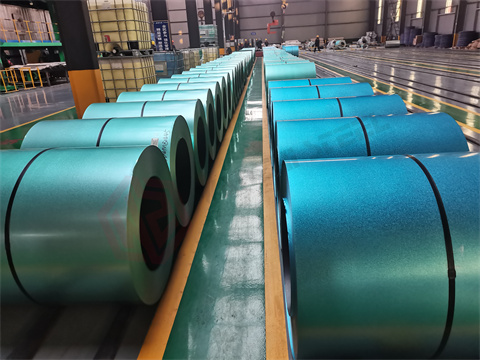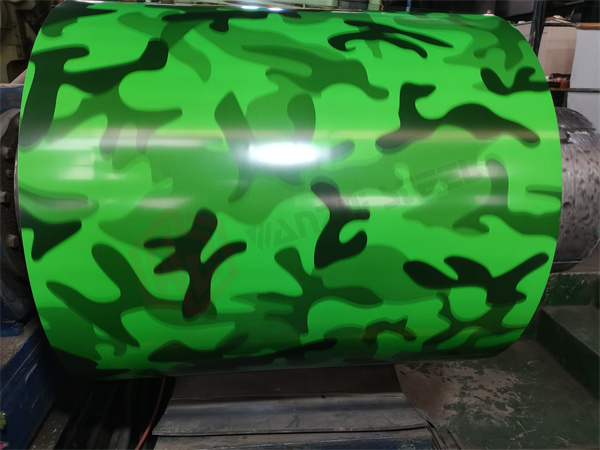Color Coated Steel Coil
Contents |
[edit] Specification
Colour coated steel coils are painted in a variety of colours for aesthetic and protective purposes. Coatings help prolong the lifespan of the steel by protecting it from corrosion and damage. A variety of standard colours, as well as bespoke colours and design are available. The base metal is galvanised steel, cold rolled steel and galvalume steel, typically between 0.2 mm and 1.2 mm thick, with a variable width between 600 mm and 1,250 mm.
[edit] Uses
Steel coils are used in numerous industries for a variety purposes, in the construction industry, as a roof or cladding material, and the automotive industry, for interior and exterior applications. Colour coated steel coils can be seen on painted roofs, fenders, hoods, bumpers, and door panels as well as in furniture, lamps, and general consumer goods.
[edit] Manufacture
The procedure of making colour coated steel coils involves three steps:
- Step 1 - The base metal is cleaned and pre-treated to remove rust, oil, and other contaminants.
- Step 2 - A primer coat is applied to help the paint adhere to the metal surface. Once dry, the coil is then fed to a painting line to be coated with one or more layers of paint.
- Step 3 - After application, the coil is oven-cured to guarantee a lengthy-lasting finish and then quality checked.
[edit] Benefits
- Durable.
- Resistant to deterioration.
- Easier to keep clean and maintain.
- Simple colour selection.
- Protection against the elements.
[edit] Quality checks
Quality checks are a crucial part of any manufacturing process, and that is certainly true for the creation of colour coated steel coils. There are a number of different tests which can be used to assess the quality of the steel coils, including tests for thickness, width, flatness, colour uniformity, gloss level, and so on. By carefully conducting these quality checks each and every stage of production, manufacturers can ensure that their products fulfil the highest standards.
[edit] Related articles on Designing Buildings
Featured articles and news
The UK’s largest air pollution campaign.
Future Homes Standard, now includes solar, but what else?
Will the new standard, due to in the Autumn, go far enough in terms of performance ?
BSRIA Briefing: Cleaner Air, Better tomorrow
A look back at issues relating to inside and outside air quality, discussed during the BSRIA briefing in 2023.
Restoring Abbotsford's hothouse
Bringing the writer Walter Scott's garden to life.
Reflections on the spending review with CIAT.
Retired firefighter cycles world to raise Grenfell funds
Leaving on 14 June 2025 Stephen will raise money for youth and schools through the Grenfell Foundation.
Key points for construction at a glance with industry reactions.
Functionality, visibility and sustainability
The simpler approach to specification.
Architects, architecture, buildings, and inspiration in film
The close ties between makers and the movies, with our long list of suggested viewing.
SELECT three-point plan for action issued to MSPs
Call for Scottish regulation, green skills and recognition of electrotechnical industry as part of a manifesto for Scottish Parliamentary elections.
UCEM becomes the University of the Built Environment
Major milestone in its 106-year history, follows recent merger with London School of Architecture (LSE).
Professional practical experience for Architects in training
The long process to transform the nature of education and professional practical experience in the Architecture profession following recent reports.
A people-first approach to retrofit
Moving away from the destructive paradigm of fabric-first.
International Electrician Day, 10 June 2025
Celebrating the role of electrical engineers from André-Marie Amperè, today and for the future.
New guide for clients launched at Houses of Parliament
'There has never been a more important time for clients to step up and ...ask the right questions'
The impact of recycled slate tiles
Innovation across the decades.
EPC changes for existing buildings
Changes and their context as the new RdSAP methodology comes into use from 15 June.


























